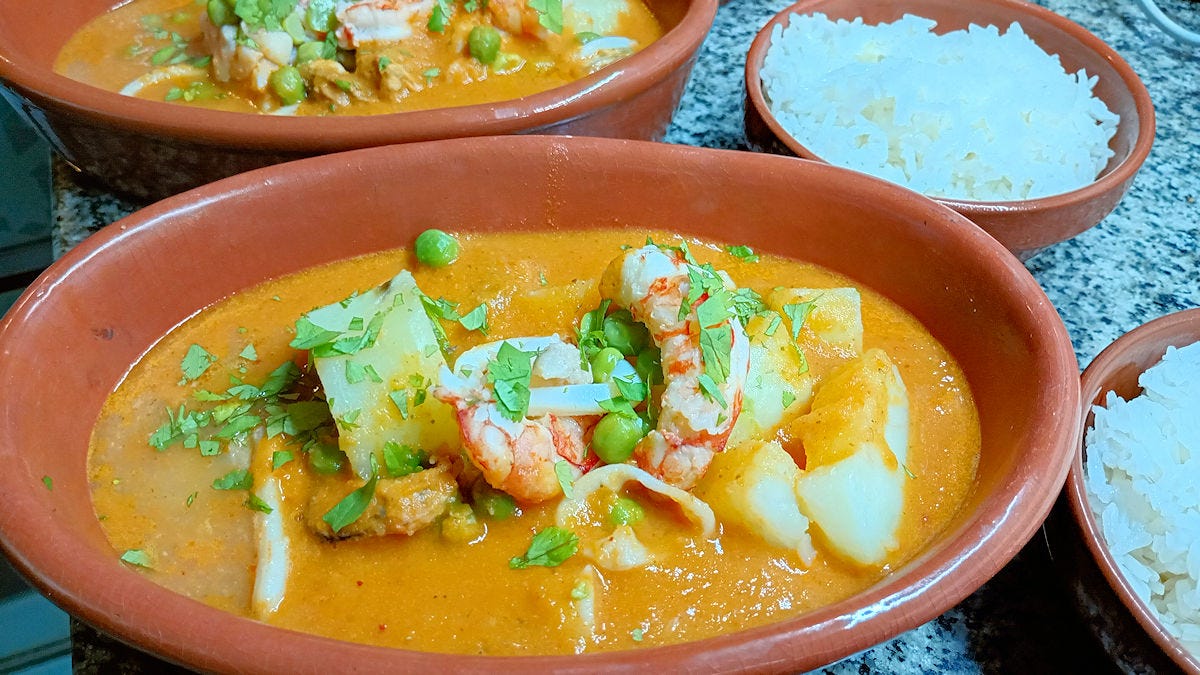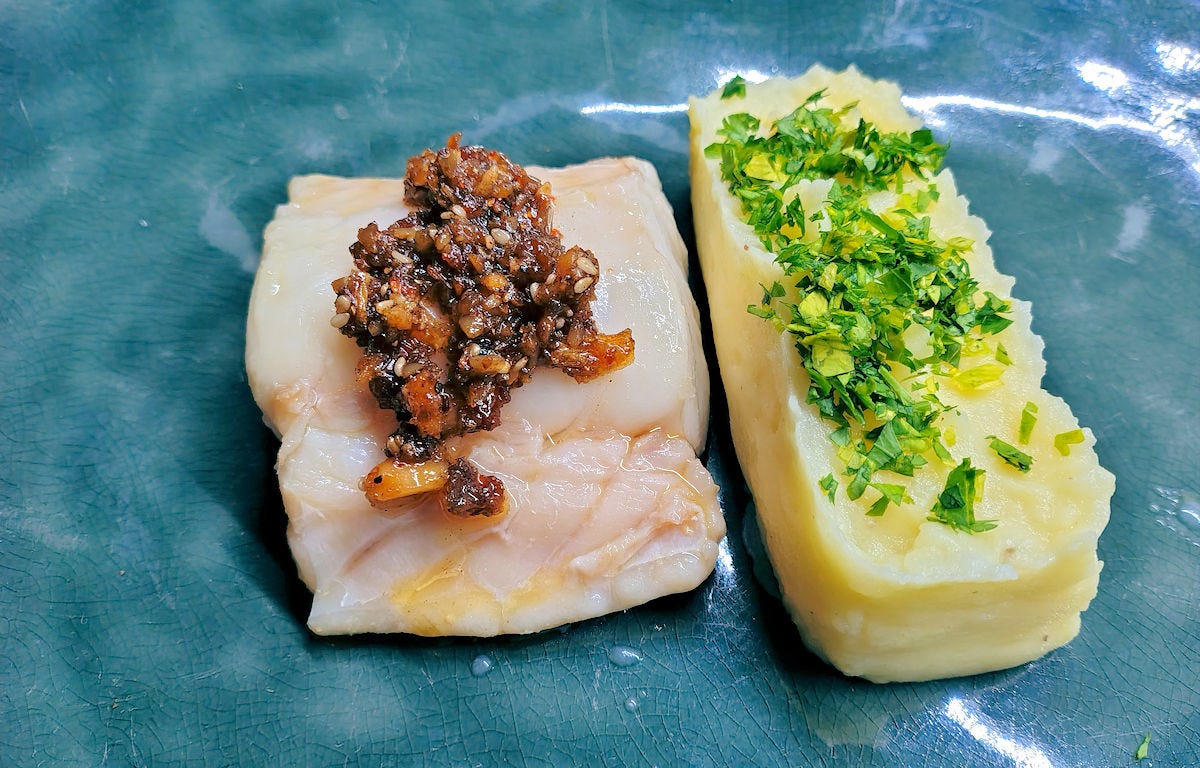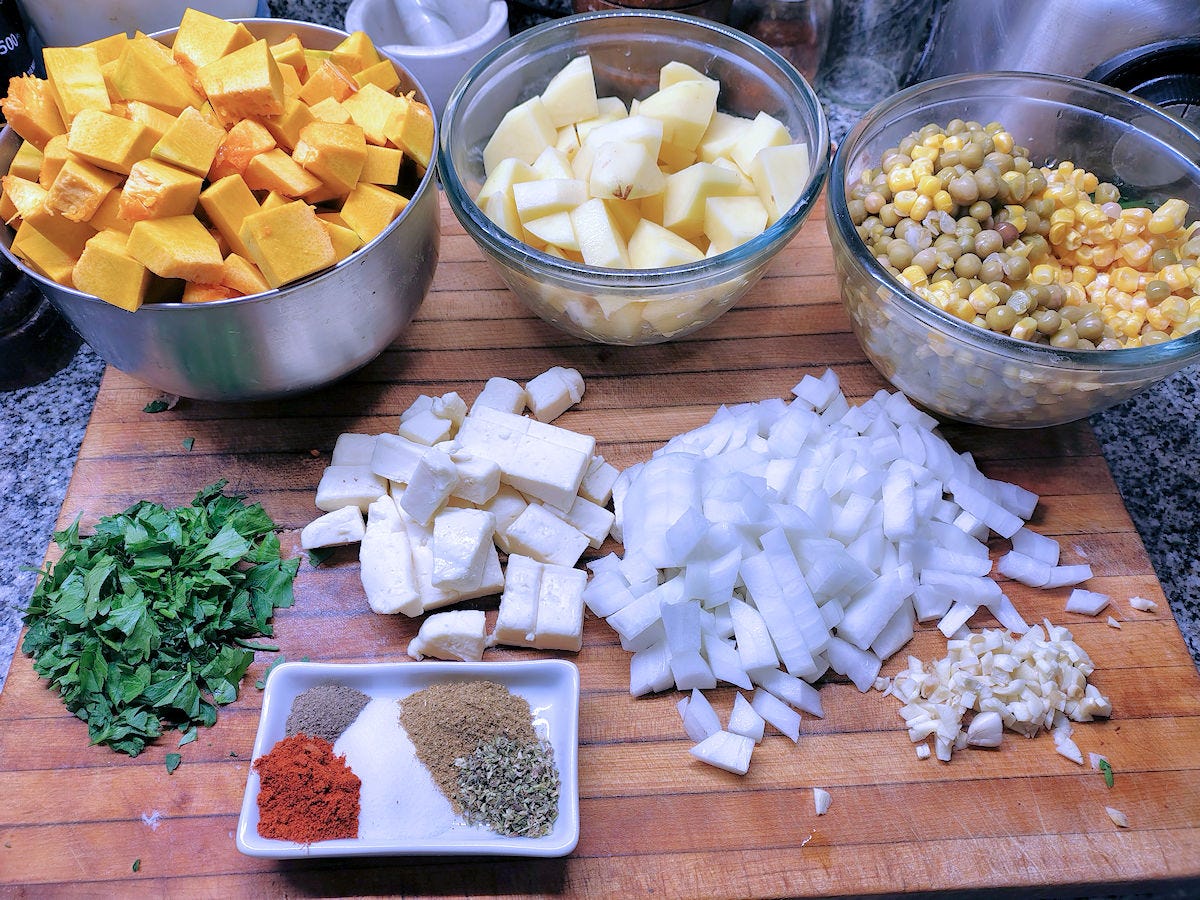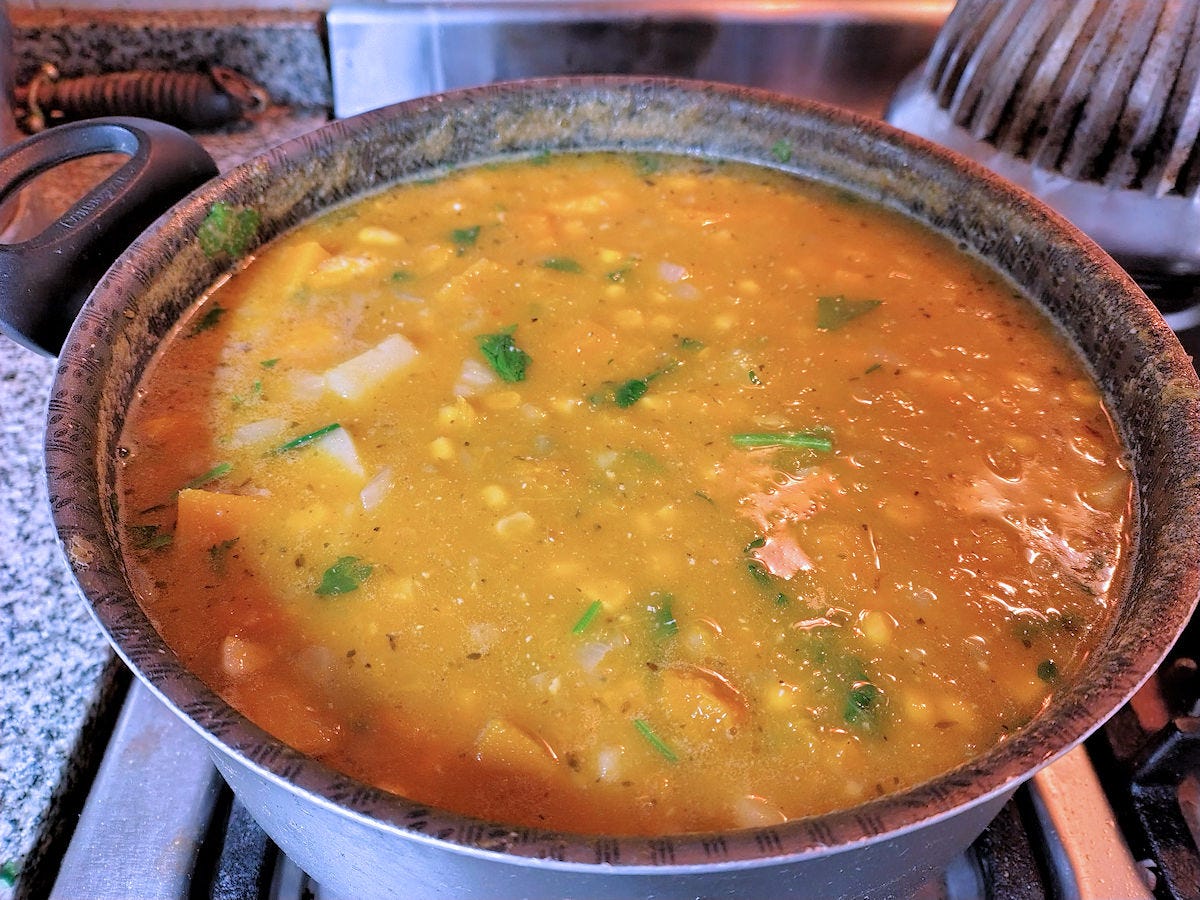Stuff on Plates
In which I show you dishes "in the works" for Casa SaltShaker, or other projects.
What’s the latest stuff I’ve been working on in the kitchen? Enquiring minds want to know. Don’t they?
Parihuela (de mariscos) is a classic Peruvian seafood stew that has origins back to pre-Hispanic cooking. By whatever passes for definition for a dish that old, it consists of a mix of fish and shellfish in a base of aji panca and aji mirasol, the two most common dried peppers in Peruvian cooking, something acidic, usually either lime juice or something sour and fermented, like chicha de jora, a sort of corn beer, aromatic herbs, and seaweed. In modern times it usually has potatoes or other tubers in it, though that’s not a requirement, and rice on the side, because Peruvians have come to believe that no meal is complete without rice (Japanese and Chinese influence, would be my best guess). My version uses tomatoes for the acidity, which is also common, along with a touch of lime juice and the chilies, but I give it a little umami kick with some added white miso, and just a splash of cream for richness. Prawns, shrimp, mussels, calamari, potatoes, peas, and cilantro are in the mix.
Inspired by a dish that was prepared in one of the competitions in a new Netflix show, Culinary Class Wars, which was fun, if a bit over the top, this is a new dish I’ve been playing around with. The pasta, an unusual one called sorpresine, little surprises, that is basically tortellini with no filling. Most often used as a soup pasta, here I basically made a sauce out of New England clam chowder instead of a classic white clam sauce for pasta - giving it more richness with the bacon and cream. The pasta subs in for the potatoes, in essence, and there’s obviously less broth, so it’s not a soup. It’s not 100% there yet, but it’s on the way.
I’m sure I’ll do a write-up of this dish, step-by-step, soon. Pretty much the traditional linguine al pesce alla ligure, or fish linguine from Liguria. Inspired to make this one from the last episode of Stanley Tucci’s Searching for Italy, which I’d never gotten around to making one of the dishes from. You can find the others on the SaltShaker blog. Though I wasn’t a huge fan of the show… well, of him, more than the show, the dishes were fun to play around with. What makes this one different from many seafood pastas I’ve played around with is that dried linguine is cooked in a rich, tomato-y seafood broth, and cooked down until the broth is all absorbed, rather than being cooked separate and added to the sauce at the end. The pasta ends up with a different flavor and texture.
Another one that we’ll get to a step by step soon - toasted spaghetti with shrimp, lemon, garlic, and parsley. Here, dried spaghetti is fried in olive oil with garlic until it’s got a lovely browned tinge, and then it’s cooked almost risotto style in lemon infused water, a little bit added at a time until it’s cooked through, then finished with fresh shrimp, parsley, lemon zest, and black pepper. It needs a little tweaking, but it’s destined to be one of my favorites.
Working on my own recipe for Chili Crisp, the latest condiment to be all the rage around the gastronomy world. It’s pretty close to exactly the way I want it (with a few more tweaks, when I get it exactly what I’m imagining, I’ll post the recipe), and I’ve been experimenting with dishes that make use of it. Like this…
Abadejo, or ling cod, cooked sous vide in butter and white miso. Topped with the chili crisp and accompanied by a buttery potato puree topped with chopped parsley and grated lemon zest.
Or, like this…
I thought it needed something more flavorful than a plain white fish. Here, I paired it with a medallion of pork loin cooked in butter, olive oil, and red miso. I wanted to accompany it with corn, and I was thinking esquites, a classic Mexican side dish, but with a Sichuan twist - instead of the usual mayo, lime juice, Tajín, and grated cheese, I made our house Sichuan mayo of lime, egg yolk, Sichuan peppercorn oil, fish sauce, corn oil, and cilantro, and then added in a touch of a blend of chili flakes, and grated reggianito cheese. On the side, some quickly sautéed chicory leaves with garlic, just to give a touch of a bitter element opposite the sweetness. I loved the way this turned out.
And, I’m going to finish off with a short recipe for another locro, this one called Locro Potosino. It’s a Bolivian version, from Potosí, in the south of the country (and the center of silver production, I believe), and, vegetarian. For those who are new to my scribblings, this is a long, slow project to explore various national and regional recipes for different locros, a type of stew found throughout Latin America, or at least South, and maybe parts of Central, America. You can get a brief sense of the project on this page on the old blog.
For Argentines, the locro criollo is the national dish, and it’s ubiquitous in restaurants around the country, and a major production is made of it when national holidays roll around. Which is often. But even in Argentina there are variations, and not just of the sort that someone uses one slightly different ingredient in theirs versus yours. It’s been a fun exploration.
Here we have squash, potatoes, corn, peas, onions, garlic, fresh cheese, parsley, salt, pepper, sweet paprika, cumin, and oregano. Not pictured, a little olive oil and a pot of hot vegetable stock.
Sauté the onions and garlic in a little neutral oil for about five minutes until translucent and soft.
Add everything but the cheese and parsley, top with the vegetable stock (or just water), bring to a simmer and cook over low heat for about half an hour, until the squash is basically ready to fall apart.
Add the cheese and parsley and kind of whip it all around a lot so that the squash more or less falls apart and thickens the soup, the cheese gets semi-distributed. Much of that will depend on your cheese, I used one that’s similar to a Port Salut, which partially melted into the soup but mostly stayed in cubes.
And… eat. Upfront, of the vegetarian versions we’ve tried so far, this is the least interesting. It’s good, filling, nutritious, all that stuff. But it just didn’t leave us wanting more.














